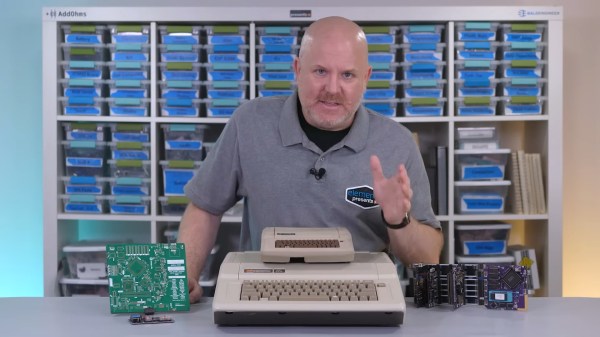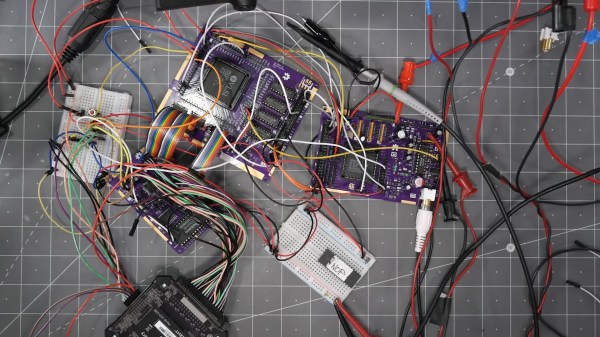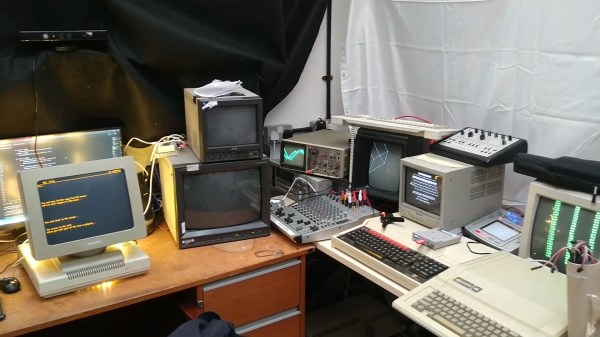Here at Hackaday, we love living in a future with miniaturized versions of our favorite retrocomputers. [James Lewis] has given us another with his fully functional Apple IIe from the Mega II chip.
When we last checked in on the Mega IIe, it was only just booting and had a ways to go before being a fully functional Apple II. We really love the modular dev board he designed to do the extensive debugging required to make this whole thing work. Each of the boards is connected with jumper pins, which [Lewis] admits would have been better as edge connectors since he should’ve known he’d be unplugging and replugging them more than he’d like.

This modular prototyping system paid dividends late in the project when a “MEGA bug” threatened the stability of the entire system. Since it was confined to the keyboard PCB, [Lewis] was able to correct the error and, swapping for the third revision of the board, everything that had been crashing the system now ran.
There were still some issues going to the final unified PCB that nearly made him give up on the project, but perseverance paid off in the end. Combining vintage chips and multiple RP2040s isn’t for the feint of heart.
Now that you have a more conveniently-sized Apple II, why not teach it some new tricks like digital photography or ChatGPT?
















